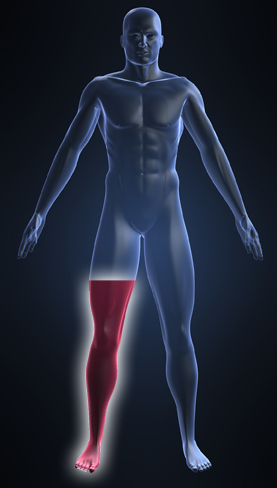Chronic Pain
Overview
According to the American Academy of Pain Medicine, “Chronic pain affects more Americans than diabetes, heart disease and cancer combined.” There are many approaches to treating chronic pain, of which biofeedback can be beneficial to certain types of pain. The National Institute of Health in the US acknowledges, “Behavioral interventions for pain also demonstrate promise for providing pain relief either in conjunction with or in lieu of drug interventions.
Although not considered to be in the same category of chronic pain, disorders such as fibromyalgia, repetitive strain injury and headaches are not to be forgotten as conditions with periodic pain that have been shown to benefit from biofeedback and even neurofeedback treatment.
Team Leader
 Dr. Richard A. Sherman received his doctorate in biology/psychology from New York University in 1973 and is currently Master Instructor at Chapman University as well as Dean of Clinical Psychophysiology at the University of Natural Medicine and Director of the Behavioral Medicine Research and Training Foundation. He is certified by BCIA, approved by BCIA to teach the general biofeedback certification course, and currently teaches A&P, Pain Assessment and Intervention, Research, and Pelvic Floor Disorders for the Behavioral Medicine R&T Foundation. He is a professional psychophysiologist with extensive training and has nearly 30 years of experience in the field. He has had numerous grants to study various aspects of pain mechanisms and interventions and has well over a hundred publications.
Dr. Richard A. Sherman received his doctorate in biology/psychology from New York University in 1973 and is currently Master Instructor at Chapman University as well as Dean of Clinical Psychophysiology at the University of Natural Medicine and Director of the Behavioral Medicine Research and Training Foundation. He is certified by BCIA, approved by BCIA to teach the general biofeedback certification course, and currently teaches A&P, Pain Assessment and Intervention, Research, and Pelvic Floor Disorders for the Behavioral Medicine R&T Foundation. He is a professional psychophysiologist with extensive training and has nearly 30 years of experience in the field. He has had numerous grants to study various aspects of pain mechanisms and interventions and has well over a hundred publications.
Education
The BFE offers a variety of educational material related to chronic pain, by Dr. Sherman and other practitioners. We invite you to explore our online shop to see the many options available related to chronic pain. Below, we have listed a links to sessions, live or recorded, that may be of interest.
Pain Assessment and Intervention from a Psychophysiological Perspective Online Course: learn about underlying mechanisms of pain and interventions for such pain in this 45 hour continuing education (CE) credit home study course presented by Dr. Sherman.
Dr. Swingle’s Fibromyalgia, Chronic Fatigue and Anxiety Disorders Webinar Recording: Dr. Swingle discusses treatment of fibromyalgia, chronic fatigue and anxiety disorders using his ClinicalQ and Braindriver method in this webinar recording.
Software
Dr. Sherman has collaborated with the BFE to encapsulate his methodology into software suites for treating chronic pain. Click on the link below to learn more
Chronic Pain Suite by Dr. Richard Sherman and Pedro Teiveira, PT
This software suite is a tool for health professionals to provide three different assessment techniques and five treatment approaches for dealing with general chronic pain, as well as phantom pain, using different biofeedback measures. Most protocols of this software are based on Dr. Sherman’s book “Pain Assessment and Intervention from a Psychophysiological Perspective (2012)”, which references biofeedback and pain management technique based on results of numerous studies by a variety of authors published in peer reviewed journals.
The BFE has also worked with other practitioners in fields related to pain. Although their methodologies are not the same as Dr. Sherman`s above chronic pain techniques, we feel it would be useful to list them below. Feel free to click on the links below to learn more about the techniques developed into BFE software suite by experts in their fields.
Upper Trapezius Evaluation Suite
Originally based on pain research by Susan Middaugh, Ph.D., this is a simple evaluation tool for assessing muscle asymmetry and elevated resting tension between upper trapezius muscles, with an automated excel report and notes for interpreting data. The software suite is used with clients suffering from back pain, neck pain and tension headaches. Athletes in various sports, especially golf, can also benefit since elevated tension or asymmetry impede motion and decrease fluidity of movement.
Repetitive Strain Injury (RSI) by Dr. Erik Peper
This suite is excellent for professionals entering the field of repetitive strain injury (RSI) prevention and ergonomics, with a primary focus on office workers at computers. The software can be divided into three categories of use: general assessment, typing at the computer assessment, and micro-break training. This package is a useful aid for users of the “Muscle Biofeedback at the Computer” book by Erik Peper, Ph.D. and Katherine Hughes Gibney.
Learn More…
Protocol
Virtually everybody who has had an amputation reports feeling sensations which appear to emanate from the amputated portion of the limb. Most of the time, these “phantom” sensations are painless and of sufficiently low intensity to be no more than a mild distraction(9). The sensations are usually similar to those which would be felt in an intact limb, including warmth, itching, sense of position, and mild squeezing. Awareness of details of the limb’s shape and perceived ability to move it tend to fade with time. However, almost all amputees report continuing to feel at least some phantom sensations throughout the remainder of their lives. When phantom sensations become intense enough for the amputee to define them as painful, they are called “phantom pains”. The neural mechanisms which permit perception of phantom limbs are well recognized(3,4). Sensations reaching the brain are identified for location on the skin by the homunculus, in the sensory cortex, which contains a representation of the entire body surface. Thus, a pinch of the left index finger tip stimulates a location on the homunculus representing the left index finger tip.



